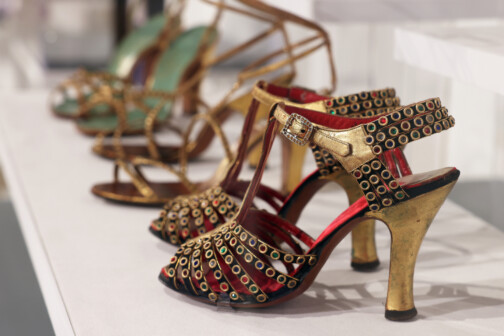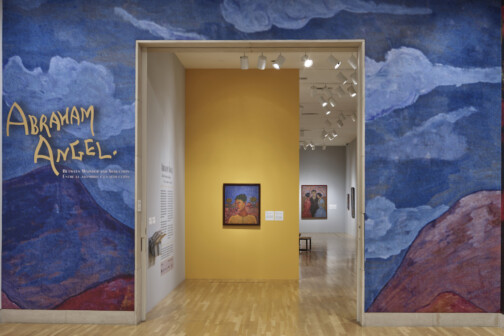Jeremy Strick became the director of the Nasher Sculpture Center in 2009. The museum was just five years old and attempting to establish itself on the international art scene as something beyond a local family’s sculpture collection, albeit an impressive one. Upon his hire, Strick told the New York Times that the museum is “a jewel of an institution with the finest collection of modern and contemporary sculptures in the world.”
Under his leadership, both the museum’s reputation and its collection have grown exponentially. Soon, the museum will begin its search for a new leader. Strick announced his plans to retire in the spring of 2024.
“Serving as director of the Nasher Sculpture Center has been a tremendous honor and the greatest joy,” Strick said in a press release. “I am forever grateful to the many extraordinary artists we have had the honor of celebrating, exhibiting and collecting over the years, and to the Dallas community for its unwavering interest and support.”
When the museum announced that Strick would become its second director, the news was met with an air of skepticism. He’d earned a reputation for his incisive, thoughtful work as a curator at the Art Institute of Chicago, the Saint Louis Art Museum, and the National Gallery of Art in Washington D.C. But he would be coming to Dallas directly from Los Angeles, where he’d been the director of the Museum of Contemporary Art (MoCA) during a financially tumultuous decade. He’d been removed from his position the previous fall as part of a deal to rescue the museum from collapsing. Hiring him was a risk—one that now seems to have been worth taking.
“Jeremy has demonstrated that a museum dedicated to a singular field can be dynamic while advancing scholarship, and experimental while retaining purpose and focus,” said David Haemisegger, the chair of the Nasher’s Board of Trustees. Haemisegger led the search more than 15 years ago that hired Strick and will lead the search for his replacement.
The Raymond and Patsy Nasher Collection alone would have been enough of a draw for art lovers as it existed in 2003, when the museum opened in the gorgeous Renzo Piano-designed building on Flora Street. It has long contained works by Richard Serra, Pablo Picasso, Mark di Suvero, Alberto Giacometti. With nearly 500 pieces in total, the collection is so extensive that works from it are also constantly on display at NorthPark Center and D/FW International Airport.
While under Strick’s direction, the museum’s collection grew in size and scope. It added works by contemporary artists including Phyllida Barlow, Nicole Eisenman, and Melvin Edwards, along with 24 sculptures by one of the 20th century’s most important artists, Jean (Hans) Arp. The museum’s representation of women artists has grown as well. In 2015, a local artist and philanthropist established the eponymous Kaleta A. Doolin Fund for Women Artists, which has purchased works by artists including Judy Chicago, Ana Mendieta, and Maren Hassinger—some of which are on display in the current exhibit “Groundswell: Women in Land Art.”
It would be easy to point to the Nasher Prize as the most prominent success during Strick’s time as museum director. In 2015, Strick helped establish an international sculpture award with a similar prestige to the Pritzker Architecture Prize or the Turner Prize, which represents a more general variety of visual art and is awarded by the Tate Britain. With laureates including Theaster Gates, Isa Genzken, and Nairy Baghramian, this award centers the contemporary international conversation about sculpture around the Nasher name, and therefore Dallas.
“As a laureate myself, I can underscore how transformative the Nasher Prize is for an artist,” Baghramian said. “Jeremy will surely be remembered for his unconditional support of contemporary artists working in sculpture and for prioritizing the medium’s place in art history.”
But from my perspective, the true success of Strick as the director of the Nasher is on a more local scale. His museum has been one of the constants in the Dallas art scene, which has had its share of growing pains over the past few decades. During his time here, Strick has demonstrated a keen interest in, and dedication to, the artists living in and around Dallas.
The Nasher is one of the museums where you will find artists consistently collaborating and working on exhibitions and education programs. In 2015, the museum launched a microgrant program for Texas artists, as a way to bolster the studio practice of regional creatives. These projects have not in any way directly benefitted the museum, and the program did not require an obligation from the recipient. Instead, they directly impacted the work of local artists. One of the first grantees, the ceramicist Margaret Meehan, used the $1,000 award to hire an electrician and purchase an environmental vent for her kiln.
Another hallmark of the Nasher during the last 14 years has been its innovative programs, from the Nasher Xchange to Nasher Windows, both of which reimagined the structural restraints of museum exhibitions. Windows, which would eventually lead to the free vestibule gallery program, Nasher Public, was the brainchild of Associate Curator Leigh A. Arnold, who wanted to program a part of the museum during the pandemic.
Strick’s museum has been one in which the curatorial staff is often taking the reins. Over the years, museumgoers have learned from the interests and proclivities of curators Jed Morse, Catherine Craft, and Arnold, who have crafted reliably intelligent, thought-provoking exhibits. At every press preview or member event, Strick is rarely absent, ready with a warm introduction and happy to turn the spotlight over to the curator.
“As I look to the future, I expect the Nasher will maintain its leadership in the field of modern and contemporary sculpture, while remaining a treasured place of discovery and enjoyment for visitors from North Texas and beyond,” Strick says.
Author







